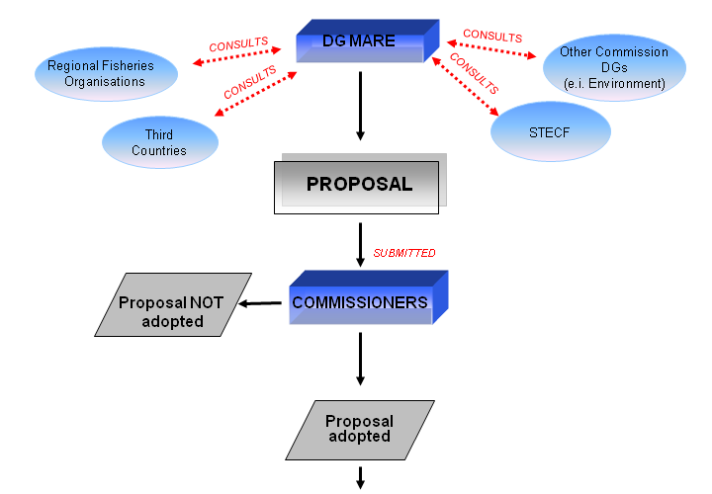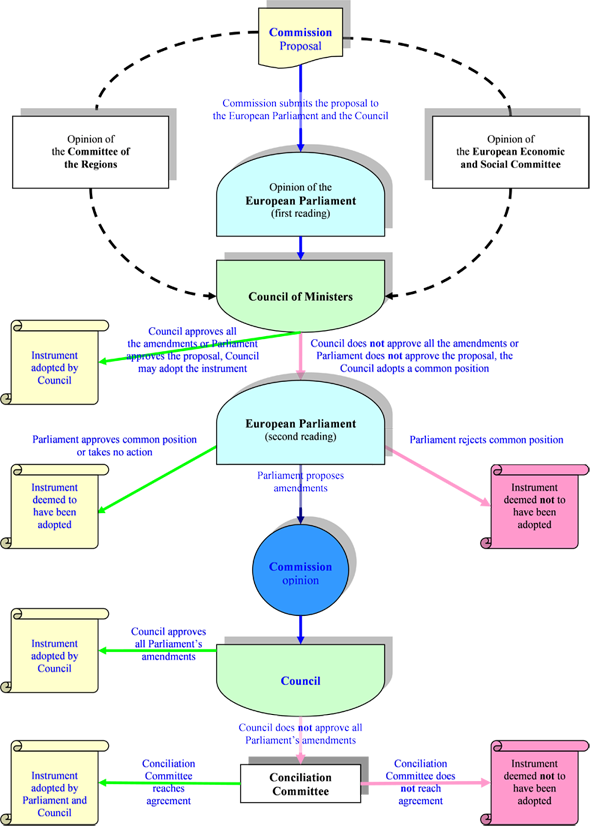Legislative decision-making in the European Union
EU law is divided into 'primary' and 'secondary' legislation. The treaties (primary legislation) are the basis or ground rules for all EU action. Secondary legislation – which includes regulations, directives and decisions – are derived from the principles and objectives set out in the treaties.
The EU's standard decision-making procedure is known as 'Ordinary Legislative Procedure' (also called "co-decision"). This means that the European Commission has the initiative for a legislative proposal (see below). The European Parliament has to approve the legal instrument together with the Council (the governments of the 27 EU countries) by co-decision (see below).
If you are interested to learn more about the European Union's legislative processes, please visit the websites of the European Union and of the European Parliament
Legislative proposal
The Commission has the 'right of initiative' – it can propose new laws to protect the interests of the EU and its citizens. It does this only on issues that cannot be dealt with effectively at national, regional or local level (subsidiarity principle).The Commission drafts and implements EU legislation.
Before the Commission proposes new initiatives it assesses the potential economic, social and environmental consequences that they may have. It does this by preparing 'Impact assessments' which set out the advantages and disadvantages of possible policy options. The Commission also consults interested parties such as non-governmental organisations, local authorities and representatives of industry and civil society. Groups of experts give advice on technical issues. In this way, the Commission ensures that legislative proposals correspond to the needs of those most concerned and avoids unnecessary red tape. Citizens, businesses and organisations can participate in the consultation procedure via the website Public consultations.
National parliaments can formally express their reservations if they feel that it would be better to deal with an issue at national rather than EU level.
This diagram is a simplifying schema of the major pathway for the proposal process in the marine sector.

Co-decision procedures
The European Parliament and the Council review proposals by the Commission and propose amendments. If the Council and the Parliament cannot agree upon amendments, a second reading takes place.
In the second reading, the Parliament and Council can again propose amendments. The Parliament has the power to block the proposed legislation if it cannot agree with the Council.
If the two institutions agree on amendments, the proposed legislation can be adopted. If they cannot agree, a conciliation committee tries to find a solution. Both the Council and the Parliament can block the legislative proposal at this final reading.
This diagram is a simplifying schema of the co-decision procedure leading to Community law.

